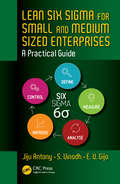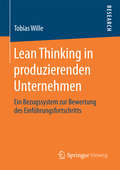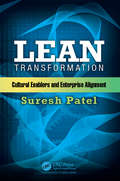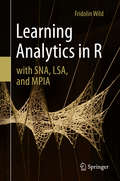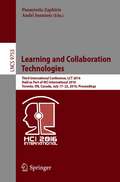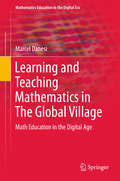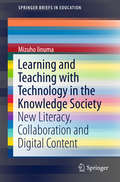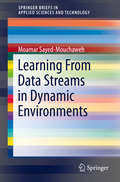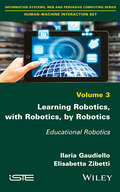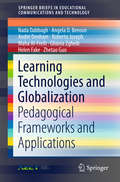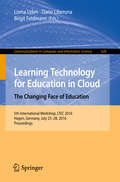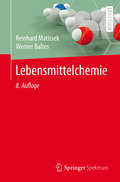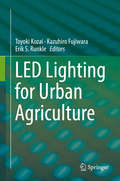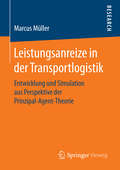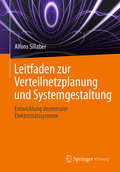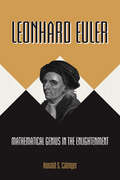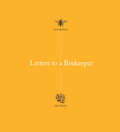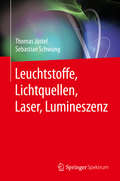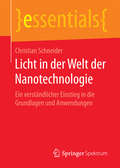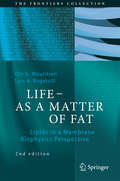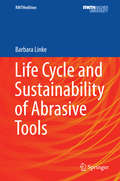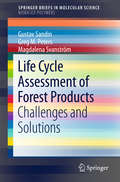- Table View
- List View
Lean Six Sigma for Small and Medium Sized Enterprises: A Practical Guide
by Jiju Antony S. Vinodh E. V. GijoIt is no secret that Lean Six Sigma (LSS) is not as popular with small and medium-sized enterprises (SMEs) as it is with larger ones. However, many SMEs are suppliers to larger entities who are pushing for superior quality and world-class process efficiencies from suppliers.Lean Six Sigma for Small and Medium Sized Enterprises: A Practical Guide provides a roadmap for the successful implementation and deployment of LSS in SMEs. It includes five real-world case studies that demonstrate how LSS tools have been successfully integrated into LSS methodology. Simplifying the terminology and methodology of LSS, this book makes the implementation process accessible. Supplies a general introduction to continuous improvement initiatives in SMEs Identifies the key phases in the introduction and development of LSS initiatives within an SME Details the most powerful LSS tools and techniques that can be used in an SME environment Provides tips on how to make the project selection process more successful This book covers the fundamental challenges and common pitfalls that can be avoided with successful introduction and deployment of LSS in the context of SMEs. Systematically guiding you through the application of the Six Sigma methodology for problem solving, the book devotes separate chapters to the most appropriate tools and techniques that can be useful in each stage of the methodology.Keeping the required math and statistics to a minimum, this practical guide will help you to deploy LSS as your prime methodology for achieving and sustaining world-class efficiency and effectiveness of critical business processes.
Lean Six Sigma for Small and Medium Sized Enterprises: A Practical Guide
by Jiju Antony S. Vinodh E. V. GijoIt is no secret that Lean Six Sigma (LSS) is not as popular with small and medium-sized enterprises (SMEs) as it is with larger ones. However, many SMEs are suppliers to larger entities who are pushing for superior quality and world-class process efficiencies from suppliers.Lean Six Sigma for Small and Medium Sized Enterprises: A Practical Guide provides a roadmap for the successful implementation and deployment of LSS in SMEs. It includes five real-world case studies that demonstrate how LSS tools have been successfully integrated into LSS methodology. Simplifying the terminology and methodology of LSS, this book makes the implementation process accessible. Supplies a general introduction to continuous improvement initiatives in SMEs Identifies the key phases in the introduction and development of LSS initiatives within an SME Details the most powerful LSS tools and techniques that can be used in an SME environment Provides tips on how to make the project selection process more successful This book covers the fundamental challenges and common pitfalls that can be avoided with successful introduction and deployment of LSS in the context of SMEs. Systematically guiding you through the application of the Six Sigma methodology for problem solving, the book devotes separate chapters to the most appropriate tools and techniques that can be useful in each stage of the methodology.Keeping the required math and statistics to a minimum, this practical guide will help you to deploy LSS as your prime methodology for achieving and sustaining world-class efficiency and effectiveness of critical business processes.
Lean Thinking in produzierenden Unternehmen: Ein Bezugssystem zur Bewertung des Einführungsfortschritts
by Tobias WilleMit der Bereitstellung der notwendigen Methoden in Form eines Bezugssystems bietet Tobias Wille eine einfache Möglichkeit zur ganzheitlichen Bewertung der Fortschritte während einer Unternehmenstransformation in Richtung Lean Thinking. Durch die Operationalisierung des Bezugssystems ergibt sich eine in der Praxis unkompliziert einsetzbare Bewertungslogik, die an das jeweilige Produktionssystem des zu bewertenden Unternehmens angepasst werden kann. Dabei gibt die Bewertung nicht nur Aufschluss über den aktuellen Stand der Einführung, sondern dient auch der Ableitung sinnvoller weiterer Schritte. Das Bezugssystem folgt dabei der Messung des organisationalen Wandels in den Dimensionen Verständnis, Umsetzung und Ergebnis, wobei jedes der 3 Module entsprechend ausgestaltet wird, sodass sich 9 methodische Bausteine ergeben.
Lean Transformation: Cultural Enablers and Enterprise Alignment
by Suresh PatelBooks in the Quality and Business Excellence series can help readers improve customer value and satisfaction by integrating the voice of the customer into design, manufacturing, supply chain, and field processes. Lean Transformation: Cultural Enablers and Enterprise Alignment is about the Lean system. It begins by describing the reasons why so many Lean implementations fail and explaining why managers need to focus their valuable time on early adopters rather than on trying to convert resistors.This book describes the guiding principles of the Shingo process for continuous improvement layout and evaluation. It examines the principles, systems, and tools of continuous improvement and demonstrates how to deploy these proven methods in plants and distribution centers.The book covers time-tested continuous improvement process tools and practices, including the visual workplace, mistake proofing, PDCA, 5S, Heijunka, standard work, Kaizen, and value stream mapping. It also examines Lean performance measures and introduces a comprehensive Lean tool assessment system.Presenting seven proven techniques for altering and guiding a Lean culture, the book identifies a formal process for overcoming common roadblocks. It also illustrates the proliferation of the Lean initiative across an organization's various sites. This book describes how proper assessment of Lean system tools can help your organization remain focused on system standardization and boost your organization’s sustainability efforts. It includes job descriptions of various roles in the improvement process, including those for Lean supervisor and Lean team leader, as well as a glossary that defines key terms.
Lean Transformation: Cultural Enablers and Enterprise Alignment
by Suresh PatelBooks in the Quality and Business Excellence series can help readers improve customer value and satisfaction by integrating the voice of the customer into design, manufacturing, supply chain, and field processes. Lean Transformation: Cultural Enablers and Enterprise Alignment is about the Lean system. It begins by describing the reasons why so many Lean implementations fail and explaining why managers need to focus their valuable time on early adopters rather than on trying to convert resistors.This book describes the guiding principles of the Shingo process for continuous improvement layout and evaluation. It examines the principles, systems, and tools of continuous improvement and demonstrates how to deploy these proven methods in plants and distribution centers.The book covers time-tested continuous improvement process tools and practices, including the visual workplace, mistake proofing, PDCA, 5S, Heijunka, standard work, Kaizen, and value stream mapping. It also examines Lean performance measures and introduces a comprehensive Lean tool assessment system.Presenting seven proven techniques for altering and guiding a Lean culture, the book identifies a formal process for overcoming common roadblocks. It also illustrates the proliferation of the Lean initiative across an organization's various sites. This book describes how proper assessment of Lean system tools can help your organization remain focused on system standardization and boost your organization’s sustainability efforts. It includes job descriptions of various roles in the improvement process, including those for Lean supervisor and Lean team leader, as well as a glossary that defines key terms.
Learning Analytics in R with SNA, LSA, and MPIA
by Fridolin WildThis book introduces Meaningful Purposive Interaction Analysis (MPIA) theory, which combines social network analysis (SNA) with latent semantic analysis (LSA) to help create and analyse a meaningful learning landscape from the digital traces left by a learning community in the co-construction of knowledge. The hybrid algorithm is implemented in the statistical programming language and environment R, introducing packages which capture – through matrix algebra – elements of learners’ work with more knowledgeable others and resourceful content artefacts. The book provides comprehensive package-by-package application examples, and code samples that guide the reader through the MPIA model to show how the MPIA landscape can be constructed and the learner’s journey mapped and analysed. This building block application will allow the reader to progress to using and building analytics to guide students and support decision-making in learning.
Learning and Collaboration Technologies: Third International Conference, LCT 2016, Held as Part of HCI International 2016, Toronto, ON, Canada, July 17-22, 2016, Proceedings (Lecture Notes in Computer Science #9753)
by Panayiotis Zaphiris Andri IoannouThis book constitutes the refereed proceedings of the Third International Conference on Learning and Collaboration Technologies, LCT 2016, held as part of the 18th International Conference on Human-Computer Interaction, HCII 2016, in Toronto, Canada, in July 2016, in conjunction with 14 thematically similar conferences. The 1287 papers presented at the HCII 2016 conferences were carefully reviewed and selected from 4354 submissions. The papers cover the entire field of human-computer interaction, addressing major advances in knowledge and effective use of computers in a variety of application areas. The papers included in this volume are organized in the following thematic sections: instructional design; interaction techniques and platforms for learning; learning performance; web-based, mobile and ubiquitous learning; intelligent learning environments; learning technologies; collaboration technologies; and cultural and social aspects of learning and collaboration technologies.
Learning and Teaching Mathematics in The Global Village: Math Education in the Digital Age (Mathematics Education in the Digital Era #6)
by Marcel DanesiThis book provides a fundamental reassessment of mathematics education in the digital era. It constitutes a new mindset of how information and knowledge are processed by introducing new interconnective and interactive pedagogical approaches. Math education is catching up on technology, as courses and materials use digital sources and resources more and more. The time has come to evaluate this new dynamic, which transcends all previous use of ancillary devices to supplement classroom math instruction. Interactivity and interconnectivity with the online world of math and math texts (such as television programs and internet sites) can be integrated with our traditional modes for delivery of math instruction.This book looks at how this integration can unfold practically by applying these relevant pedagogical principles to elementary topics such as numeration, arithmetic, algebra, story problems, combinatorics, and basic probability theory. The book further exemplifies how mathematics can be connected to topics in popular culture, information technologies, and other such domains.
Learning and Teaching with Technology in the Knowledge Society: New Literacy, Collaboration and Digital Content (SpringerBriefs in Education #0)
by Mizuho IinumaThis book discusses learning and teaching with modern technology in the new knowledge society. It focuses specifically on new literacy and technology in classroom environments. Based on a social-constructivist approach, this book covers a wide range of new technology use examples, such as participatory media, video recording systems and 3D computer graphics. A case study on a constructivist approach to teaching and learning, especially CSCL (computer supported collaborative learning), is discussed from a practical perspective for educators. It also includes specific in-class practices with detailed accounts of curricula featuring readily accessible yet new technology available for classroom use, such as Google Sketchup 3D computer models.
Learning from Data Streams in Dynamic Environments (SpringerBriefs in Applied Sciences and Technology)
by Moamar Sayed-MouchawehThis book addresses the problems of modeling, prediction, classification, data understanding and processing in non-stationary and unpredictable environments. It presents major and well-known methods and approaches for the design of systems able to learn and to fully adapt its structure and to adjust its parameters according to the changes in their environments. Also presents the problem of learning in non-stationary environments, its interests, its applications and challenges and studies the complementarities and the links between the different methods and techniques of learning in evolving and non-stationary environments.
Learning Robotics, with Robotics, by Robotics: Educational Robotics
by Ilaria Gaudiello Elisabetta ZibettiThe relationship between technological and pedagogical innovation has recently created a new field of research at the crossroads between Psychology, Educational Sciences and Artificial Intelligence: Educational Robotics (ER). Through analysis of the achievable educational goals based on the technological status and specific learning modes of different types of robots, it is possible to define three pedagogical paradigms: learning robotics, learning with robotics, and learning by robotics. In this book we address these three paradigms through three themes: human representations of robots, the acceptance and trust shown when interacting with a humanoid, and learning favored by the development and programming of robots in an educational context. These themes allow the authors to fully explore, define and delimit this novel field of research for future application in educational and social contexts. Finally, the book discusses contributions and limitations which have emerged from different methodologies of research, potential educational applications, and concepts of human–robot interaction for the development of the above paradigms.
Learning Robotics, with Robotics, by Robotics: Educational Robotics
by Ilaria Gaudiello Elisabetta ZibettiThe relationship between technological and pedagogical innovation has recently created a new field of research at the crossroads between Psychology, Educational Sciences and Artificial Intelligence: Educational Robotics (ER). Through analysis of the achievable educational goals based on the technological status and specific learning modes of different types of robots, it is possible to define three pedagogical paradigms: learning robotics, learning with robotics, and learning by robotics. In this book we address these three paradigms through three themes: human representations of robots, the acceptance and trust shown when interacting with a humanoid, and learning favored by the development and programming of robots in an educational context. These themes allow the authors to fully explore, define and delimit this novel field of research for future application in educational and social contexts. Finally, the book discusses contributions and limitations which have emerged from different methodologies of research, potential educational applications, and concepts of human–robot interaction for the development of the above paradigms.
Learning Technologies and Globalization: Pedagogical Frameworks and Applications (SpringerBriefs in Educational Communications and Technology)
by Nada Dabbagh Angela D. Benson André Denham Roberto Joseph Maha Al-Freih Ghania Zgheib Helen Fake Zhetao GuoThis brief describes the evolutionary and global impact of the techno-social transformation on learning technologies in terms of emerging pedagogical frameworks and applications. it provides examples of such applications in higher education, K-12, and the workplace, across the globe. The transformation and diffusion of ICT into an ever-present and accessible phenomenon is fundamentally shaping human activity and culture, changing human identity, and redefining globalization. Global activities have widened, intensified, and accelerated as a result of ICT integration generating a new awareness of the world as a techno-social environment. This emergent global environment is introducing unprecedented socio-economic opportunities; however, it is also bringing new risks and challenges, particularly as this relates to learning technologies, most especially in higher education contexts.
Learning Technology for Education in Cloud – The Changing Face of Education: 5th International Workshop, LTEC 2016, Hagen, Germany, July 25-28, 2016, Proceedings (Communications in Computer and Information Science #620)
by Lorna Uden Dario Liberona Birgit FeldmannThis book constitutes the refereed proceedings of the 5th International Workshop on Learning Technology for Education in Cloud, LTEC 2016, held in Hagen, Germany, in July 2016. The 25 revised full papers presented were carefully reviewed and selected from 51 submissions. The papers are organized in topical sections on learning technologies; learning tools and environment; MOOC for learning; problem solving and knowledge transfer; case study.
Lebensmittelchemie (Springer-Lehrbuch)
by Reinhard Matissek Werner BaltesDas Lehrbuch basiert auf einem systematischen Gesamtkonzept mit klarer Gliederung und einer Sammlung relevanter Fakten. In der vollständig überarbeiteten achten Auflage bietet es eine prägnante Übersicht über das gesamte Gebiet der modernen Lebensmittelchemie mit neuen, hoch aktuellen Themen aus den BereichenLebensmittelsicherheitLebensmittelqualitätErnährungswissen Lebensmittelherstellung Dieses Buch richtet sich in erster Linie an Studierende der Lebensmittelchemie, der Lebensmitteltechnologie, der Ernährungswissenschaften und der Chemie. Aber auch Studierende anderer Life Sciences (wie Veterinärmedizin und Medizin) können von diesem Werk profitieren. Praktizierende in den Bereichen Lebensmittelsicherheit, Qualitätsmanagement, Forschung und Entwicklung vieler lebensmittelchemisch arbeitender Einrichtungen der Wirtschaft, Behörden und Hochschulen finden hiermit ein handliches Quick-Reading-Manual.
LED Lighting for Urban Agriculture
by Toyoki Kozai Kazuhiro Fujiwara Erik S. RunkleThis book focuses on light-emitting diode (LED) lighting, mainly for the commercial production of horticultural crops in plant factories and greenhouses with controlled environments, giving special attention to: 1) plant growth and development as affected by the light environment; and 2) business and technological opportunities and challenges with regard to LEDs. The book contains more than 30 chapters grouped into seven parts: 1) overview of controlled-environment agriculture and its significance; 2) the effects of ambient light on plant growth and development; 3) optical and physiological characteristics of plant leaves and canopies; 4) greenhouse crop production with supplemental LED lighting; 5) effects of light quality on plant physiology and morphology; 6) current status of commercial plant factories under LED lighting; and 7) basics of LEDs and LED lighting for plant cultivation. LED lighting for urban agriculture in the forthcoming decades will not be just an advanced form of current urban agriculture. It will be largely based on two fields: One is a new paradigm and rapidly advancing concepts, global technologies for LEDs, information and communication technology, renewable energy, and related expertise and their methodologies; the other is basic science and technology that should not change for the next several decades. Consideration should be given now to future urban agriculture based on those two fields. The tremendous potentials of LED lighting for urban agriculture are stimulating many people in various fields including researchers, businesspeople, policy makers, educators, students, community developers, architects, designers, and entrepreneurs. Readers of this book will understand the principle, concept, design, operation, social roles, pros and cons, costs and benefits of LED lighting for urban agriculture, and its possibilities and challenges for solving local as well as global agricultural, environmental, and social issues.
Leistungsanreize in der Transportlogistik: Entwicklung und Simulation aus Perspektive der Prinzipal-Agent-Theorie
by Marcus MüllerMarcus Müller beschreibt und erläutert Zielkonflikte zwischen Bauleitung und Baugeräteführer und stellt ein Modell auf, das Prognosen zur Wirkung von Anreizsystemen treffen kann. Aus der Theorie und Anwendungsdomäne leitet der Autor Anforderungen ab, um die Frage nach der Gestaltung von Anreizsystemen zu beantworten, mit dem Ziel, Transportleistungen zu erhöhen. Seine Studie bestätigt die experimentellen bzw. empirischen Erkenntnisse zur Wirkung von Anreizsystemen und zeigt, dass diese auch für Transportlogistiksysteme im Tiefbau gelten. Aus den Erkenntnissen der Simulation leitet der Autor Empfehlungen für die Gestaltung von Entlohnungsmodellen ab.
Leitfaden zur Verteilnetzplanung und Systemgestaltung: Entwicklung dezentraler Elektrizitätssysteme
by Alfons SillaberDieses Buch beleuchtet das aktuelle Umfeld des Planers, Verantwortlichen und Betriebsführers sowie deren Gestaltungsmöglichkeiten. Vor dem Hintergrund der Herausforderung der Entwicklung wirtschaftlicher und zuverlässiger dezentraler Elektrizitätssysteme sind auf Basis der theoretischen Grundlagen die praxisrelevanten Anwendungen gezeigt. Eine klare Struktur und bewusst knappe Einheiten zeichnen das Buch aus. Die wichtigen Elemente der Systementwicklung sind darin herausgearbeitet. Ein umfassendes Portfolio an Planungsmethoden ist in Theorie und Praxis vorgestellt. Damit kann es zum Begleiter vom Studium bis in den Beruf werden.
Leonhard Euler: Mathematical Genius in the Enlightenment
by Ronald S. CalingerThis is the first full-scale biography of Leonhard Euler (1707–83), one of the greatest mathematicians and theoretical physicists of all time. In this comprehensive and authoritative account, Ronald Calinger connects the story of Euler's eventful life to the astonishing achievements that place him in the company of Archimedes, Newton, and Gauss. Drawing chiefly on Euler’s massive published works and correspondence, which fill more than eighty volumes so far, this biography sets Euler’s work in its multilayered context—personal, intellectual, institutional, political, cultural, religious, and social. It is a story of nearly incessant accomplishment, from Euler’s fundamental contributions to almost every area of pure and applied mathematics—especially calculus, number theory, notation, optics, and celestial, rational, and fluid mechanics—to his advancements in shipbuilding, telescopes, ballistics, cartography, chronology, and music theory.The narrative takes the reader from Euler’s childhood and education in Basel through his first period in St. Petersburg, 1727–41, where he gained a European reputation by solving the Basel problem and systematically developing analytical mechanics. Invited to Berlin by Frederick II, Euler published his famous Introductio in analysin infinitorum, devised continuum mechanics, and proposed a pulse theory of light. Returning to St. Petersburg in 1766, he created the analytical calculus of variations, developed the most precise lunar theory of the time that supported Newton’s dynamics, and published the best-selling Letters to a German Princess—all despite eye problems that ended in near-total blindness. In telling the remarkable story of Euler and how his achievements brought pan-European distinction to the Petersburg and Berlin academies of sciences, the book also demonstrates with new depth and detail the central role of mathematics in the Enlightenment.
Letters to a Beekeeper
by Alys Fowler Steve BenbowThis the story of how, over the course of a year, Alys, the Guardian gardening writer, learns how to keep bees; and Steve, the urban beekeeper, learns how to plant a pollinator-friendly garden.Part beautifully designed coffee-table book, part manifesto, this collection of engaging letters, emails, texts, recipes, notes and glorious photos creates a record of the trials, tribulations, rewards and joys of working with, rather than against, nature. And along the way, you will pick up a wealth of advice, tips and ideas for growing food and keeping pollinators well fed. Letters to a Beekeeper is for lazy gardeners, novice beekeepers and everyone in between. It is the best rule-breaking, wildlife-friendly, guerilla, urban gardening, insect-identifying, honey-tasting, wax-dripping, epistolary how-to book you could ever hope to own.
Leuchtstoffe, Lichtquellen, Laser, Lumineszenz
by Thomas Jüstel Sebastian SchwungDas vorliegende Buch dient als Nachschlagewerk wichtiger Begriffe und Materialien, die im Bereich der Lumineszenz sowie der Lampen-, Laser-, Leuchtstoff- und Lichttechnik von Bedeutung sind. Es liefert somit Antworten und Daten zu Fragestellungen im Zusammenhang mit dem Fachgebiet der Photonik.
Licht in der Welt der Nanotechnologie: Ein verständlicher Einstieg in die Grundlagen und Anwendungen (essentials)
by Christian SchneiderDieses essential gibt einen Überblick über die der Nanotechnologie zugrunde liegenden physikalischen Prinzipien, die es heute ermöglichen, mikroskopische Effekte technologisch zu nutzen. Es werden Methoden vorgestellt, welche die Herstellung von Nanostrukturen mit höchster Präzision erlauben. Im letzten Kapitel gibt der Autor einen Überblick über spannende technologische Anwendungen, angefangen vom Einsatz von auf Nanotechnologie basierenden Effekten bei Kirchenglasfenstern bis hin zu Solarzellen und CCD-Chips.
LIFE - AS A MATTER OF FAT: Lipids in a Membrane Biophysics Perspective (The Frontiers Collection)
by Ole G. Mouritsen Luis A. BagatolliThe present book gives a multi-disciplinary perspective on the physics of life and the particular role played by lipids (fats) and the lipid-bilayer component of cell membranes. The emphasis is on the physical properties of lipid membranes seen as soft and molecularly structured interfaces. By combining and synthesizing insights obtained from a variety of recent studies, an attempt is made to clarify what membrane structure is and how it can be quantitatively described. Furthermore, it is shown how biological function mediated by membranes is controlled by lipid membrane structure and organization on length scales ranging from the size of the individual molecule, across molecular assemblies of proteins and lipid domains in the range of nanometers, to the size of whole cells. Applications of lipids in nanotechnology and biomedicine are also described.The first edition of the present book was published in 2005 when lipidomics was still very much an emerging science and lipids about to be recognized as being as important for life as proteins, sugars, and genes. This significantly expanded and revised edition takes into account the tremendous amount of knowledge gained over the past decade. In addition, the book now includes more tutorial material on the biochemistry of lipids and the principles of lipid self-assembly. The book is aimed at undergraduate students and young research workers within physics, chemistry, biochemistry, molecular biology, nutrition, as well as pharmaceutical and biomedical sciences.From the reviews of the first edition:"This is a highly interesting book and a pleasure to read. It represents a new and excellent pedagogical introduction to the field of lipids and the biophysics of biological membranes. I reckon that physicists and chemists as well as biologists will benefit from this approach to the field and Mouritsen shows a deep insight into the physical chemistry of lipids." (Göran Lindblom, Chemistry and Physics of Lipids 2005, vol. 135, page 105-106)"The book takes the reader on an exciting journey through the lipid world, and Mouritsen attracts the attention with a lively style of writing … . a comprehensive view of the ‘lipid sea’ can be easily achieved, gaining the right perspectives for envisaging future developments in the nascent field of lipidomics." (Carla Ferreri, ChemBioChem, Vol. 6 (8), 2005)
Life Cycle and Sustainability of Abrasive Tools (RWTHedition)
by BARBARA LINKEThis monograph focuses on abrasive tools for grinding, polishing, honing, and lapping operations. The book describes the life cycle of abrasive tools from raw material processing of abrasive grits and bonding, manufacturing of monolithic or multi-layered tools, tool use to tool end-of-life. Moreover, this work highlights sustainability challenges including economic, environmental, social and technological aspects. The target audience primarily comprises research and industry experts in the field of manufacturing, but the book may also be beneficial for graduate students.
Life Cycle Assessment of Forest Products: Challenges and Solutions (SpringerBriefs in Molecular Science)
by Gustav Sandin Greg M. Peters Magdalena SvanströmThis brief contains information on the reduction of environmental impact and explains how it is a key driver for the R&D of new forest products. The authors, experts in the field, describe how Life Cycle Assessment (LCA) is used to assess the environmental impact of such products, e.g. in order to guide R&D or attract investments. The authors describe the main challenges of carrying out LCAs on forest products, make recommendations for managing these challenges, and discuss future research needs. LCA case studies are used to illustrate the challenges, covering a variety of forest products: building components, biofuels, industrial chemicals, textile fibres and clothing. Described challenges include the planning of LCA studies (e.g.how can one use LCA in R&D?), the modelling of product systems (how can one handle multi-functionality and uncertainties related to waste handling and geographical location of future production?) and environmental impact (how can one assess water and land use impact, and the climate impact of biomass?).
